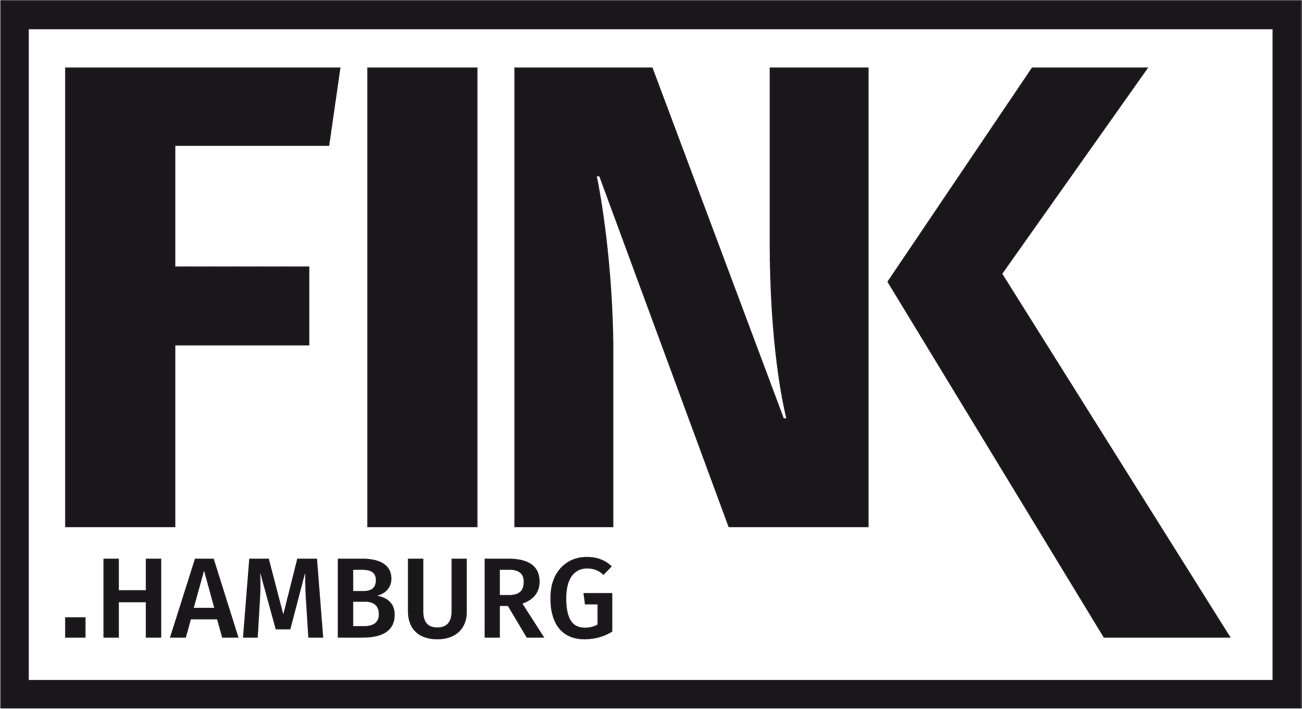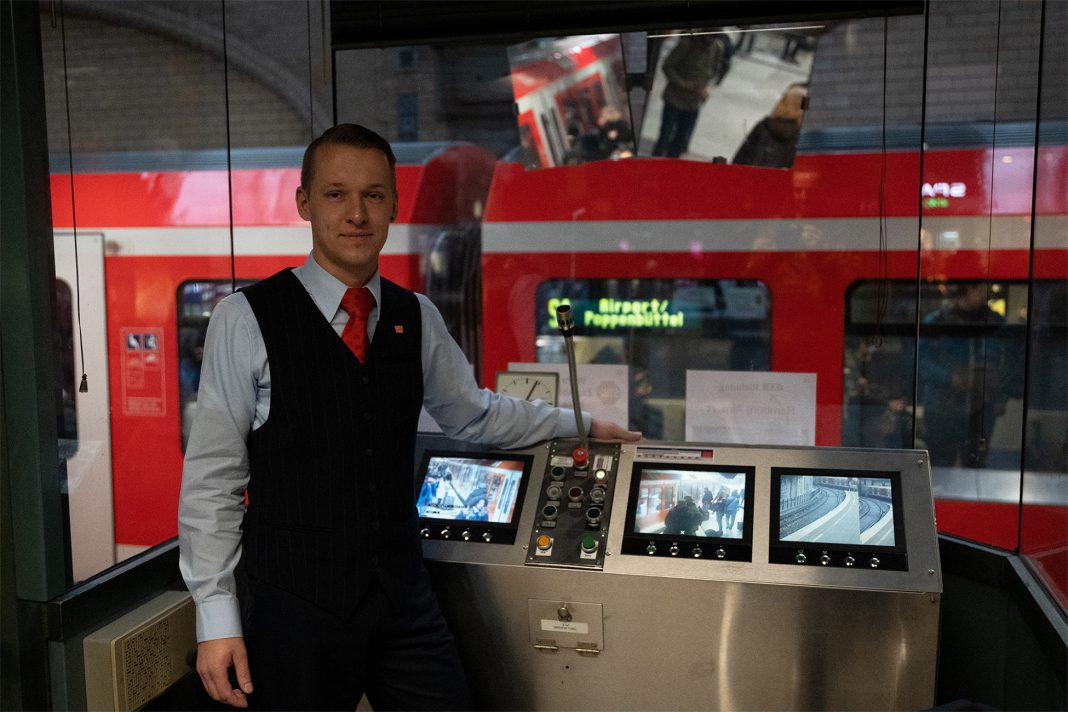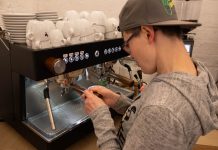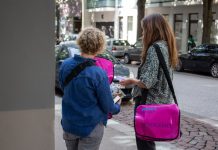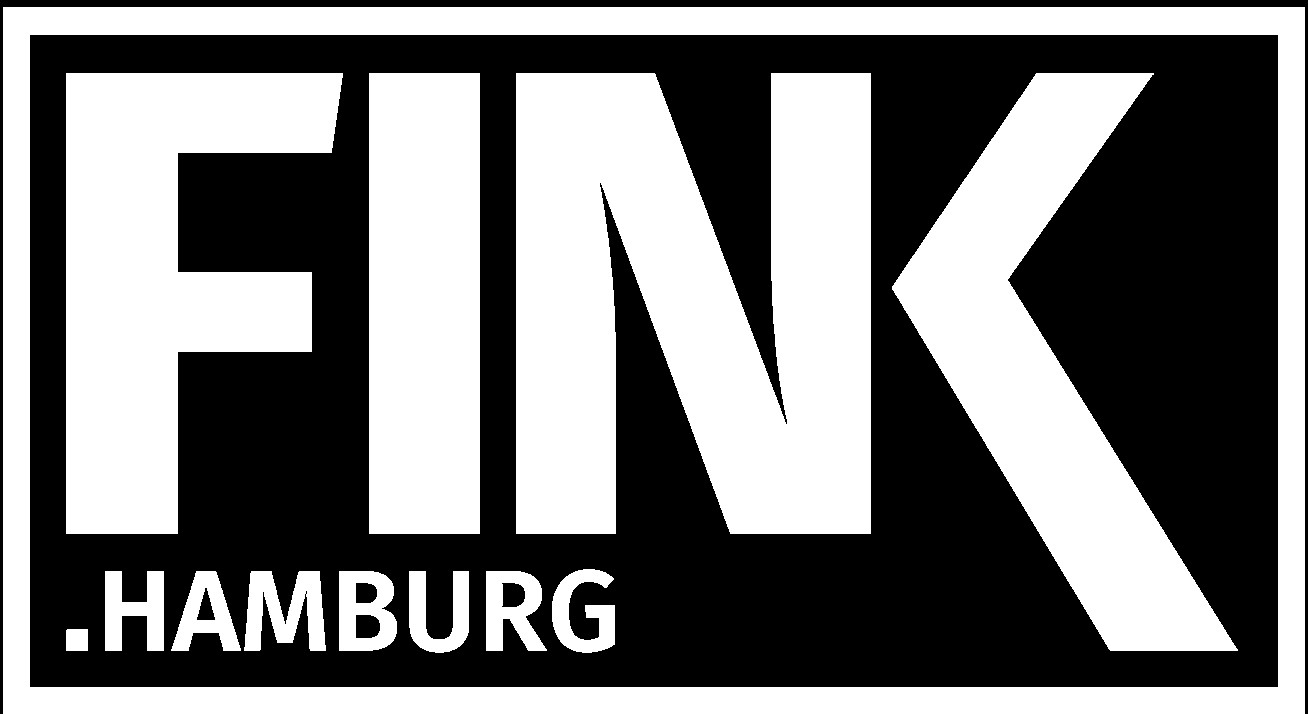Hamburg and Saint Petersburg are twinned towns, but family members do not always look alike – especially in terms of public transportation. Our FINK authors visited Saint Petersburg and discovered unique professions in both cities.
50,000 square meters. 500,000 travelers daily. Hamburg Central Station is considered as one of the most important hubs in Northern Germany and one of the most frequented railway stations in Europe. Approximately 800 local and long-distance trains and 1200 S-Bahn trains run on 14 tracks.
“The job as a train driver was too boring”
Maik Thorenz is 26 years old and works for Deutsche Bahn since ten years. Since seven years he works as a local supervisor for the S-Bahn at the Hamburg Central Station.
“I am the local supervisor of the S-Bahn at Hamburg central station and I have been working for Deutsche Bahn since ten years. I joined the S-Bahn after completing my training as a train driver for freight transport. Ever since I was a child I dreamed of becoming a train driver – that’s why I did the training. But after a while the job became too monotonous and it bored me. I always wanted to work with passengers. When I got the opportunity to work for the S-Bahn, I couldn’t deline. There is no lack of passengers at the central station.
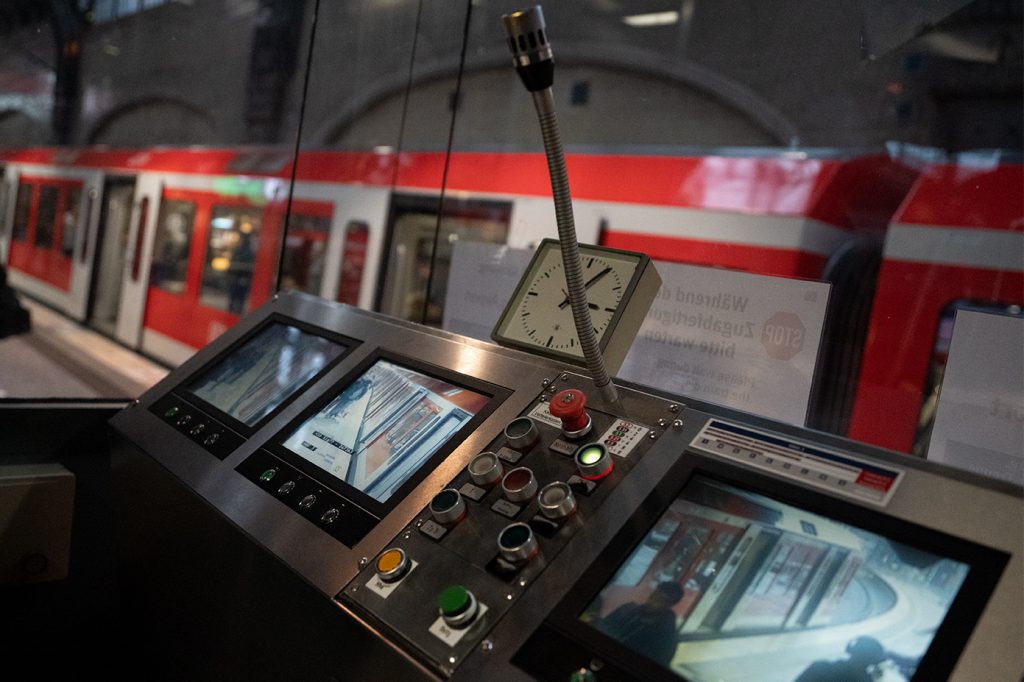
I work in three shifts. There are early, late and night shifts. Depending on the day, a shift takes between eight and twelve hours. Usually we are in a team of two. The S-Bahn platform at the central station is curved, so it is very hard to see the whole platform. It is also very crowded because of the extremely high number of passengers. We have monitors and mirrors that enable us to overview the station. If there’s any danger, we can act on the spot.
“Closing the doors is always a tricky moment”
My main task is to dispatch the trains. I observe the platform and the train when it enters the station. We also make announcements. When the train has arrived, we observe the passenger change. Afterwards the train driver receives a signal from us to close the doors. The communication works electronically.
Closing the doors is always a tricky moment, because passengers are prone to jump into the trains or people held the doors open. This happens almost in every train. That’s why trains are delayed or doors get broken. In the worst case, the train even has to be suspended because the doors are completely broken and can no longer be used.
The main station is very busy all day, but rush hours are between six and nine in the morning and four and seven in the afternoon. During this time we run six lines instead of the usual four lines.
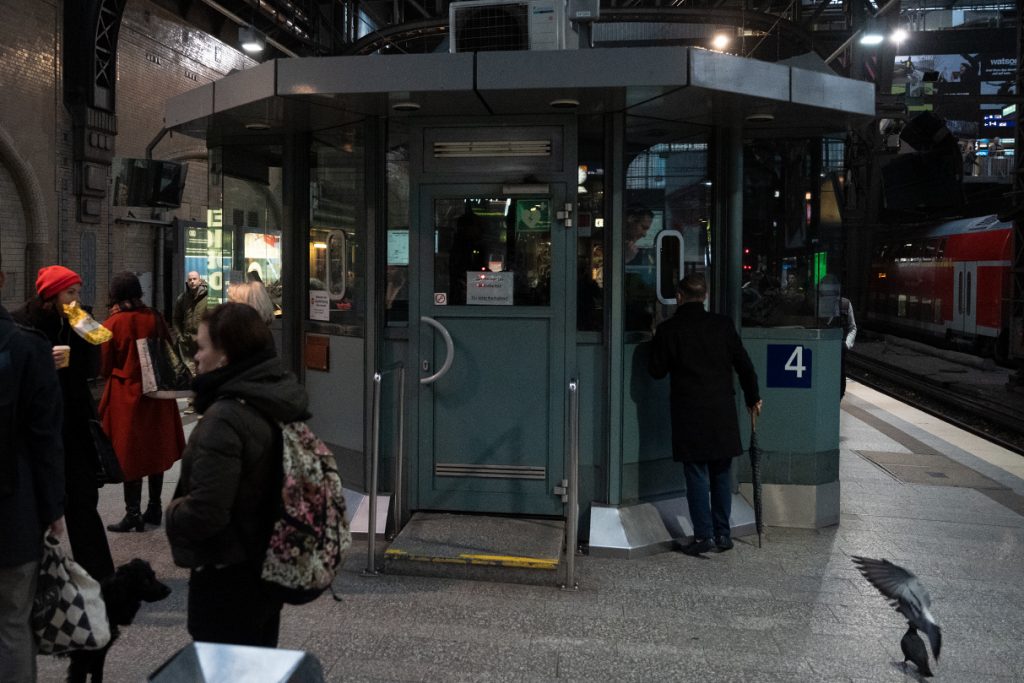
Many passengers come to our counter to ask us questions – or for instance, when they have lost something. We are the contact persons for the passengers here at the platform and we try to help them.
I remember that one time during my night shift, when a family with three children had arrived early in the morning to take the S-Bahn to the airport for their holidays. They noticed that an important bag with their travel documents was missing.
The woman was very upset and went to my work station to ask for help. I tried to contact the train driver and luckily, it worked. The security service entered the train at the next station and found the bag there. I then made sure that the bag was returned to the main station as quickly as possible so that the family could fly for their holiday. They were overjoyed. It was a really nice way to end my night shift and I went home very happy.
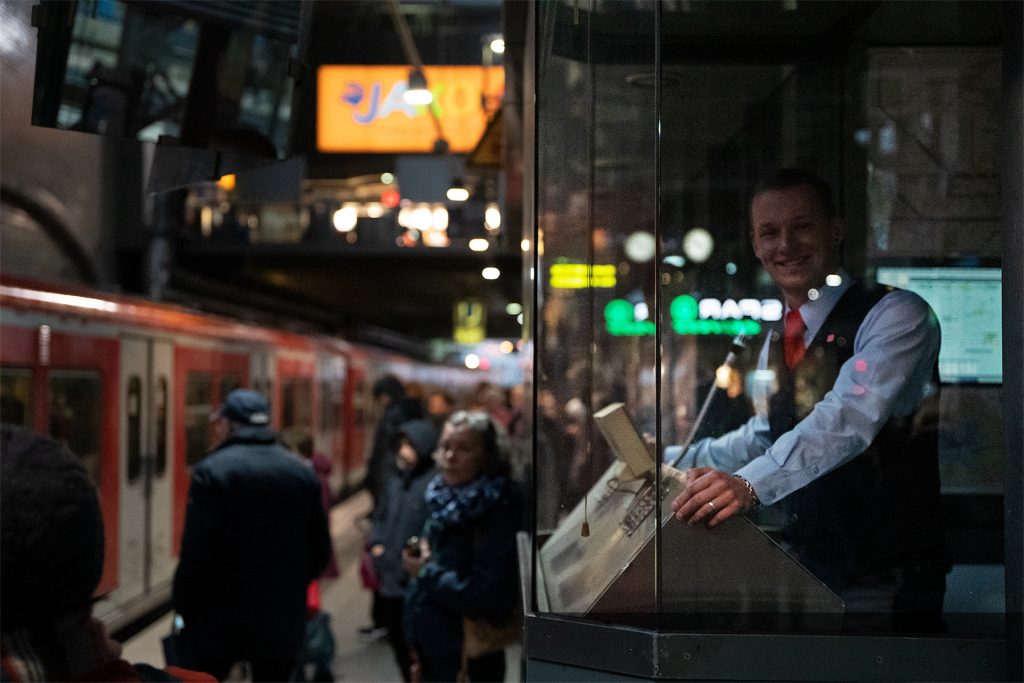
No day is like the other as an S-Bahn supervisor and you have high responsibility: People are often not aware of the danger they expose themselves, when they don’t follow the rules on the platform. Sometimes, people stand very close to the track bed in front of the safety line and forget that trains have a strong suction. Some even sit on the ground and let their feet dangle in the track bed. But that’s what we are here for.
Melanie Weimann, Jahrgang 1992, ist in ihrem Leben zwölf Mal umgezogen – einmal davon mit dem Flixbus. In Ansbach studierte die gebürtige Fränkin Ressortjournalismus mit Schwerpunkt Medizin und Biowissenschaften. Im Anatomiekurs hielt sie sogar einmal ein menschliches Herz in den Händen. Ihr Studium schloss sie allerdings in der Medienethik ab: mit einer Analyse über Jan Böhmermanns Schmähgedicht und vermutlich dem Weltrekord von Schimpfwörtern in einer wissenschaftlichen Arbeit. Später zog sie von München über Nürnberg nach Berlin, wo sie in einer Agentur und in Startups in der PR und Unternehmenskommunikation arbeitete. Unter anderem betreute sie einen Hersteller von Luxus-Hundebetten, eine Plattform für Smart Home und organisierte Events für die Dating-App Tinder: Mate, Calls und Pitches inklusive.
Kürzel: mew
